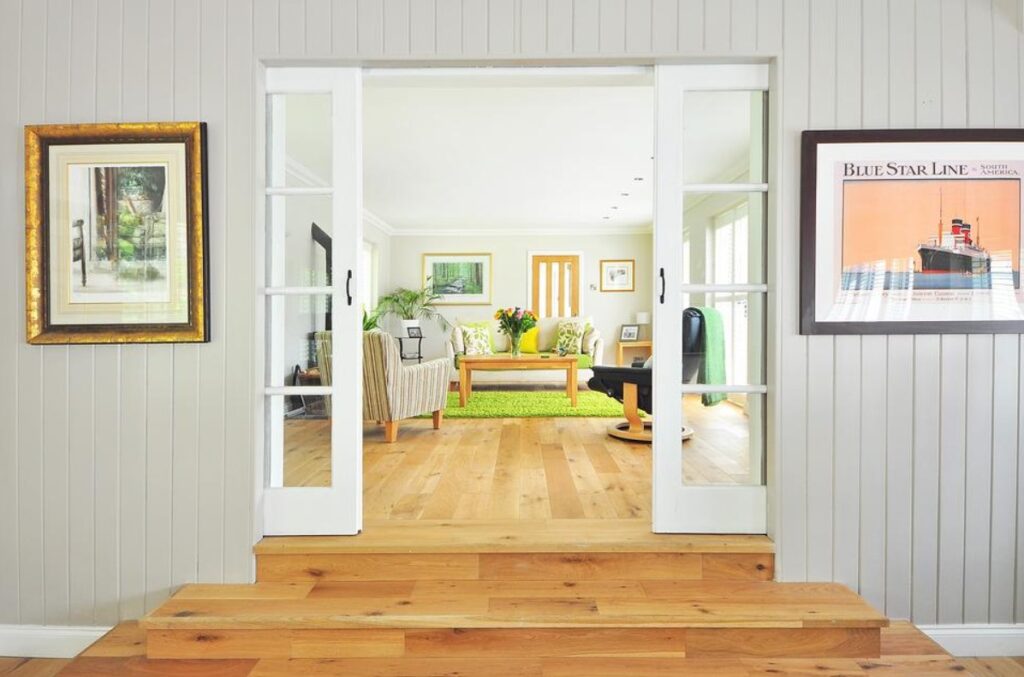In the quest for optimizing living space and enhancing interior design, pocket doors have emerged as a popular alternative to traditional hinged doors. These sleek, space-saving doors slide into the wall cavity, disappearing from view when opened. While pocket doors offer numerous benefits, there are several considerations to keep in mind before installation. Here’s a comprehensive look at why pocket doors are a great addition to any home and what you need to consider before making the switch.
Benefits of Pocket Doors
- Space-Saving Design
One of the most significant advantages of pocket doors is their space-saving design. Traditional doors require a considerable amount of swing space, which can limit furniture placement and overall room layout. Pocket doors, on the other hand, slide seamlessly into the wall, freeing up valuable floor space. This makes them ideal for small rooms, tight hallways, or areas where every square inch counts, such as bathrooms, closets, and pantries. - Enhanced Aesthetic Appeal
Pocket doors offer a clean, minimalist look that can enhance the aesthetic appeal of any room. When open, they are completely hidden, creating a streamlined appearance. This can make a space feel larger and less cluttered. Pocket doors are available in various styles, materials, and finishes, allowing homeowners to choose a design that complements their interior décor. - Improved Functionality
In addition to saving space, pocket doors can improve the functionality of your home. They are an excellent choice for areas where traditional doors may be impractical, such as in narrow hallways or between rooms with limited clearance. Pocket doors can also create a more flexible floor plan by allowing spaces to be easily connected or separated as needed. - Accessibility and Convenience
Pocket doors can enhance accessibility, particularly in homes with residents who have mobility issues. Since they slide open rather than swinging, they are easier to operate for individuals using wheelchairs or walkers. Additionally, pocket doors can be a convenient solution for busy households, as they do not obstruct traffic flow. - Increased Privacy
Pocket doors can provide an effective barrier for noise and light, making them a great choice for bedrooms, home offices, or media rooms. They can be equipped with locks for added privacy and security. When closed, they offer the same level of privacy as traditional doors, making them a versatile option for various living spaces.
Considerations Before Installing Pocket Doors
- Structural Requirements
Before installing pocket doors, it’s essential to consider the structural implications. Pocket doors require a wall cavity for the door to slide into, which means the wall must be free of plumbing, electrical wiring, and load-bearing supports. In some cases, modifications to the existing wall structure may be necessary, which can add to the overall cost and complexity of the installation. - Installation Costs
While pocket doors can save space, they can also be more expensive to install than traditional doors. The cost of a pocket door system, including the door itself, hardware, and installation, can be higher due to the need for specialized framing and hardware. Additionally, retrofitting an existing wall to accommodate a pocket door can be more labor-intensive and costly than installing a standard door. - Maintenance and Repairs
Pocket doors can be more challenging to maintain and repair compared to traditional doors. Since the door slides into the wall cavity, access to the track and rollers can be limited. It’s crucial to choose high-quality hardware and ensure proper installation to minimize the risk of issues such as misalignment, sticking, or noise. Regular maintenance, such as keeping the track clean and lubricated, can help extend the lifespan of your pocket doors. - Sound Insulation
While pocket doors can provide privacy, they may not offer the same level of sound insulation as solid, hinged doors. The door’s fit within the wall cavity can leave small gaps that allow sound to pass through. If sound insulation is a priority, consider using solid-core doors and additional weatherstripping or soundproofing materials to enhance the door’s performance. - Aesthetic Integration
Integrating pocket doors into your home’s design requires careful planning to ensure a cohesive look. The door and its hardware should complement the room’s style and décor. Additionally, consider the wall finish and any trim or molding that will frame the door opening. A well-integrated pocket door can enhance the overall aesthetic of the space.
Conclusion
Pocket doors offer a stylish, space-saving solution for modern homes, providing numerous benefits such as enhanced functionality, improved accessibility, and increased privacy. However, it’s essential to consider the structural requirements, installation costs, maintenance needs, sound insulation, and aesthetic integration before making the switch from traditional doors. By carefully weighing these factors, you can determine whether pocket doors are the right choice for your home and enjoy the many advantages they bring.


